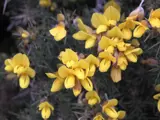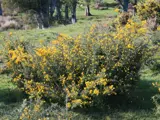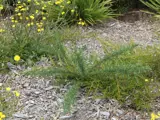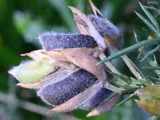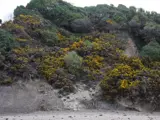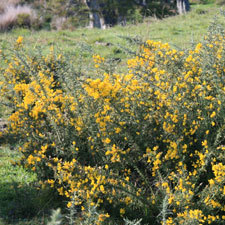 Gorse
Gorse
Common name: Gorse
Botanical name: Ulex europaeus
Management category: Sustained control
Gorse is a member of the pea family that was originally introduced from Western Europe as a windbreak and hedge plant in the early 1800s. The bright yellow flowers smell like coconut and on a hot summer’s day the dried pods can be heard popping as they release their seeds up to 5m from the parent plant.
Why is it a pest?
- Gorse quickly forms dense, spiky stands that reduces the usable pasture for livestock or production.
- Old gorse is a fire risk, burning very easily and fiercely.
- Seeds can remain viable in the soil for 40–80 years.
- Gorse is nitrogen fixing plant which can lead to adverse effects on water quality.
Where is it found?
Gorse is found throughout the Bay of Plenty. Risk areas include river systems, shrublands, forest margins, coastline, tussock land, fern land, wetland, consolidated sand dunes, gum lands, cliffs, disturbed forest, exotic plantations, poor pasture, and bare land.
It will grow almost anywhere. It tolerates hot to cold temperatures, high to low rainfall, wind, salt, grazing and all soil types.
What does it look like?
- Large, very prickly, woody, evergreen shrub growing up to 2-4 m.
- Bright yellow pea like flowers seen in spring and autumn and smell like coconut.
- Long purplish-brown seed pods split explosively to shoot seeds out and away from the plant.
What are the rules?
Sustained control
Gorse is classified as sustained control in the Bay of Plenty. This means that it is well established in the region and preventing the spread is no longer a realistic objective.
The focus in the Bay of Plenty is on reducing its general impacts. Landowners/ occupiers are responsible for the control of gorse on their land. Council may enforce control.
Gorse complaints can be made against properties that share your boundary. Council will enforce control of gorse within 10m of the offending property boundary, and only in situations where the complainant is controlling or gorse-free on their boundary.
CAUTION: When using any herbicide or pesticide, PLEASE READ THE LABEL THOROUGHLY to ensure that all instructions and directions for the purchase, use and storage of the product, are followed and adhered to.
Read more on pest control advice, information and regulations.
Images

